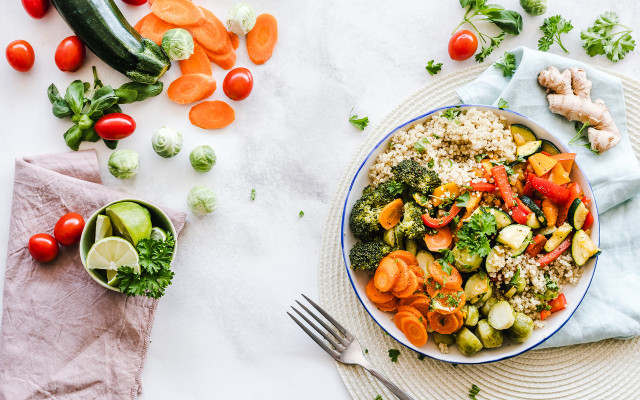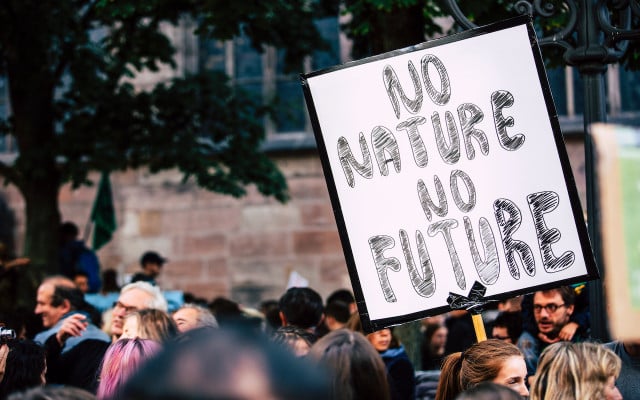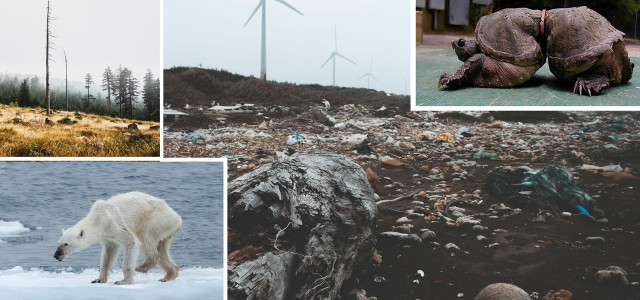Protecting the rainforest is extremely important in the fight against the climate crisis and for the preservation of biodiversity. As an individual, you can help too. We’ll share 7 ideas for how you can help save the rainforest.
Protecting the Rainforest – Why It’s Important
The rainforest is one of the most biodiverse regions on earth. The vast forested areas store large amounts of carbon dioxide, which plays a big role in stabilizing the global climate. If the entire rainforest were to disappear, the impact would be felt worldwide.
Despite all warnings, humans continue to exploit the rainforest for animal husbandry, lumber, and access to mineral resources. If we continue this destruction at the current pace, animals will be left without homes, drought will increase, and we’ll lose access to valuable resources. Luckily, there are some things we can do as individuals to help save the rainforest.
7 Tips on How to Save the Rainforest
While it’s very easy to get bogged down with eco-anxiety, there are a lot of ways you can help save the rainforest. With the following seven tips, you can help protect the rainforest a little bit every day.
1. Change the Way You Use Paper Products



One of the main drivers of rainforest deforestation is the production of paper products. The wood pulp harvested from the trees is used for hygiene products, packaging, and short-lived printed products like flyers and other marketing materials. So what can you do to protect the rainforest?
- Look for conventional toilet paper alternatives like recycled toilet paper, or a bidet (e.g. by Greenco on Amazon**).
- Make sure any paper products you buy have the Forest Stewardship Council (FSC) certification on them.
- Put a “no junk mail” sticker on your mailbox to avoid passively supporting consumption.
- Print double-sided if you need to print documents, or use the back of old print–outs as scrap paper for grocery lists or taking notes.
2. To save the Rainforest, Remove (or Limit) Meat From Your Diet



In the last 50 years, global meat production has almost quadrupled. This is problematic for both human health, and the health of the rainforests. In order to save the rainforest, the demand for meat needs to drop significantly.
To satisfy the world’s hunger for meat, we need a lot of animals, which in turn all need feed. Roughly three-quarters of the world’s agricultural land is needed for livestock and animal feed production.
Feed production for livestock is considered one of the main drivers of global deforestation, as huge areas of the rainforest are cleared to make space. According to WWF, cattle ranching accounts for 80% of current deforestation throughout the Amazon, with Brazil (the world’s largest cattle exporter) at the center of it.
Buying no meat at all would be best for the rainforest. However, if you’re not ready to switch to a vegetarian diet, be sure to buy meat from organic farms. Also, try vegetarian or vegan options to meat dishes more often, like a vegan roast!
3. Protect the Rainforest: Avoid Palm Oil Products and Buy Local Whenever Possible
Because oil palm trees need a tropical climate to grow, large areas of rainforest are often cleared to make space for oil palm plantations. That’s why another great way to help save the rainforest is avoiding palm oil as much as possible, but this is easier said than done. Many Americans might be surprised to find out just how ubiquitous palm oil is in the products that they routinely buy. It’s found in cosmetics, soaps, detergents, chocolate, and even ice cream! For consumers, it’s not always easy to find out whether or not a product contains palm oil because there are so many names it can appear under on the label. Luckily, WWF has a guide to all the terms used for palm oil.
It’s best to avoid products with palm oil as much as possible, but if you must purchase them, look for those certified by the Roundtable on Sustainable Palm Oil (RSPO). Otherwise, try to buy regionally as much as possible and, in the case of tropical products (like coffee or cocoa), look for Fair Trade, organic products.
4. Buy Secondhand or Regionally Produced Furniture



The extraction of wood for furniture is another reason for the deforestation of the rainforest. Tropical lumber (like mahogany and teak) is highly sought after, and therefore can be sold for a fat profit.
What can you do? To help protect the rainforest, buy furniture made from local tree species, like maple, oak, or beech. Keep in mind that new is not always best —old furniture can often be given new life with a little restoration work or a bit of creative upcycling.
5. How to Save the Rainforest: Use Electrical Appliances As Long As Possible and Buy Secondhand
Cell phones and other electronic devices contain mineral resources (rare earth metals) found in the rainforest. Although the proportion of mineral resources per cell phone is quite small, the electronics industry is one of the main consumers of these mineral resources.
To help save the rainforest, buy only high-quality electronics and use them for as long as possible. Try and repair broken smartphones and other electronic devices before throwing them away.
To recycle old phones and electronics, check out Call2Recycle or EcoATM. Then when it comes to getting a new phone, look for offers for used electrical appliances on Facebook Marketplace, Swappa or Gazelle.
6. Go to Protests to Build Political Pressure



Wouldn’t it be nice to go shopping and not have to think about how everything you buy was produced, what the working conditions of the people were, and whether or not rainforests were cut down for this product? Imagine a transparent shopping experience for the consumer, where the majority of the products were produced under fair conditions for both people and nature.
Political solutions are needed to achieve this, and protests or demonstrations are an effective way to get closer to that goal. So the next time there is an environmental protest near you, get involved.
7. Save the Rainforest: Be a Role Model and Get Active
Talk to your family, friends, and acquaintances about how they can help save the rainforest too. Maybe they don’t know that they can actively contribute to the protection of the rainforest. You may also be able to encourage a more resource-conserving use of paper at school or work. Set a good example and actively motivate your fellow citizens to adopt a more sustainable lifestyle.
If you want to get active, sign petitions on the topic of rainforest protection. Alternatively, you can start your own petitions and write letters to companies that are known to contribute to deforestation.
This article has been translated from German by Karen Stankiewicz. You can find the original here: Regenwald schützen: Mit diesen 7 Alltagstipps kannst auch du es
** Links to retailers marked with ** or underlined orange are partially partner links: If you buy here, you actively support Utopia.org, because we will receive a small part of the sales proceeds. More info.Do you like this post?









